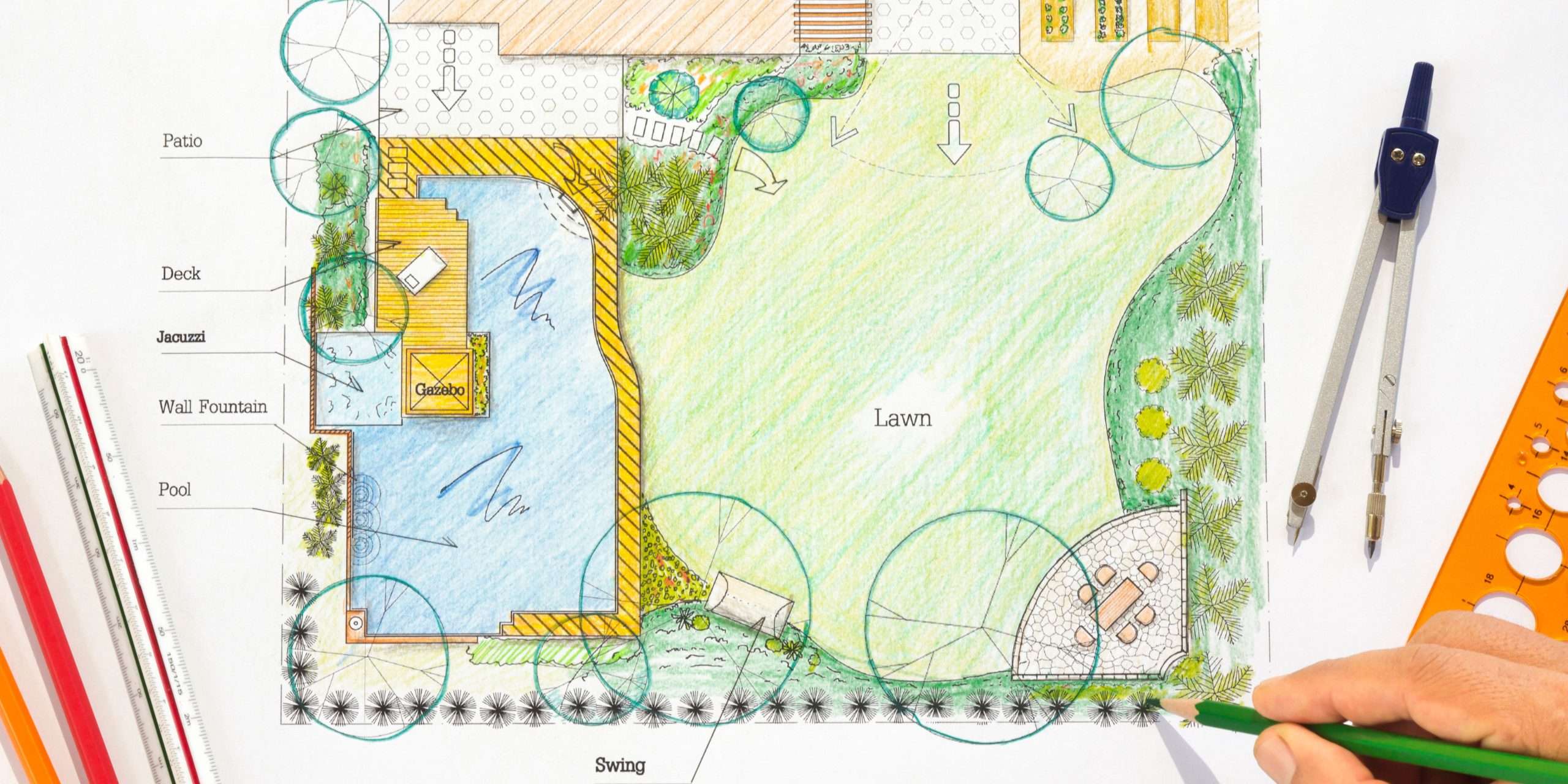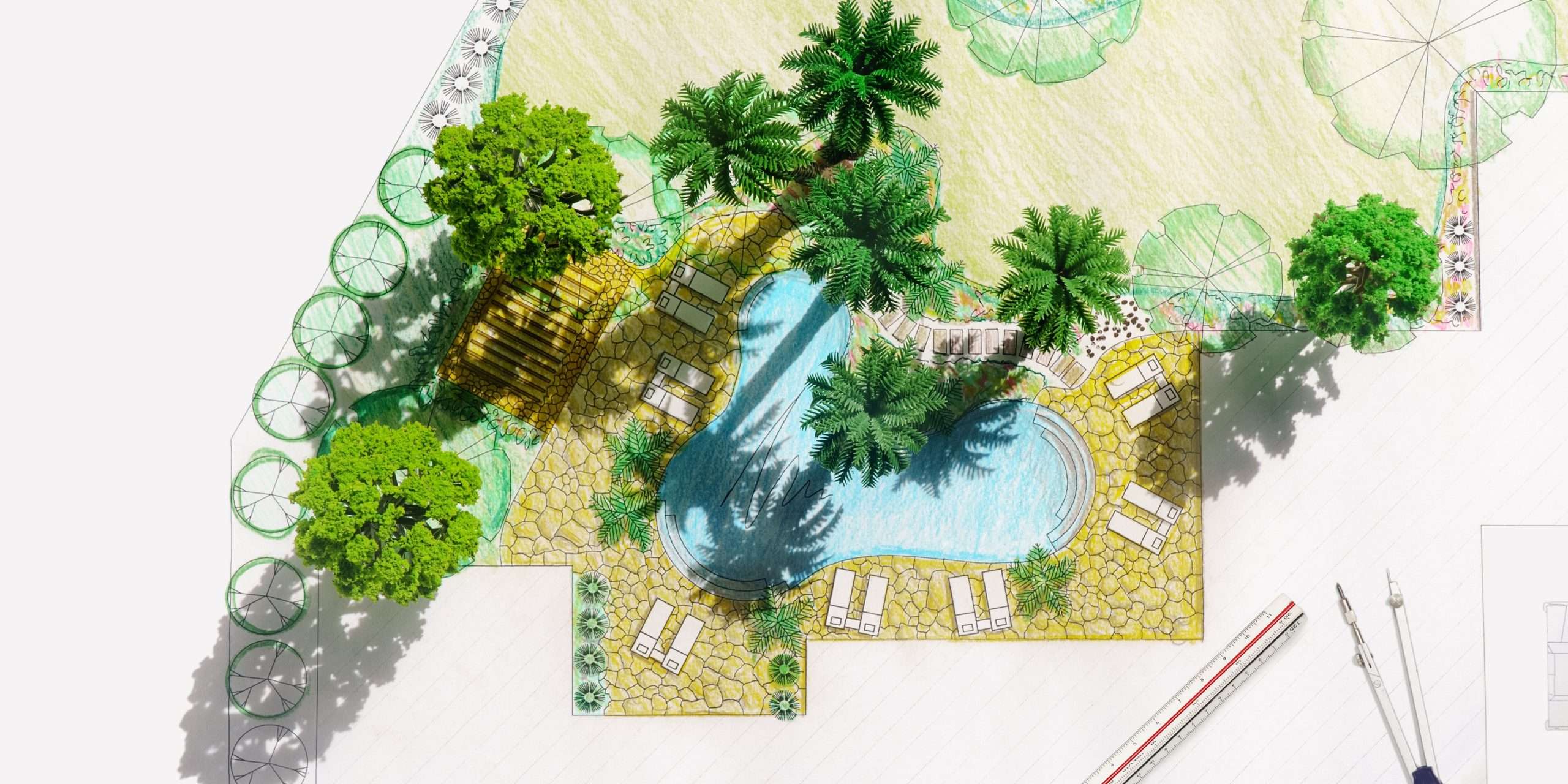The Basics of 2D Landscaping Design

a) Site Analysis: The first step is to conduct a comprehensive analysis of the site, considering factors such as topography, soil conditions, climate, and existing vegetation. This analysis helps designers understand the unique characteristics and constraints of the landscape.
b) Concept Development: Based on the site analysis, designers generate various concepts and ideas for the landscape design. This stage involves brainstorming, sketching rough ideas, and exploring different layout options.
c) Plan Creation: Once a concept is finalized, designers create a scaled 2D plan that includes various elements such as pathways, plants, trees, structures, and water features. This plan serves as a blueprint for the construction and installation process.
d) Plant Selection: Plant selection is a crucial aspect of 2D landscaping design. Designers consider factors like climate suitability, maintenance requirements, aesthetic appeal, and functional purposes when choosing plants for the landscape.
e) Hardscape Design: Apart from plants, 2D design also incorporates hardscape elements like patios, decks, retaining walls, and lighting. These elements enhance the functionality and aesthetics of the outdoor space.
The Advantages of 3D Landscaping Design

a) Realistic Visualizations: With 3D design software, designers can create highly realistic and immersive visualizations of the proposed landscape. This allows clients to have a better understanding of how the final outcome will look and feel.
b) Design Refinement: 3D design tools enable designers to make quick modifications and experiment with different elements in real-time. This flexibility allows for better refinement of the design, resulting in an optimal final plan.
c) Effective Communication: 3D renderings and walkthroughs provide a powerful communication tool between the designer and the client. Clients can visualize the design more accurately and provide feedback for any desired changes.
d) Problem Identification: 3D design software helps identify potential design issues early in the process. This allows designers to address problems such as awkward sightlines, unbalanced proportions, or lack of functionality before the actual construction begins.
The Integration of 2D and 3D Design

a) Comprehensive Planning: 2D plans ensure accurate measurements, scale, and technical details, while 3D visualizations offer a realistic representation of the design. Together, they provide a comprehensive planning approach for landscape construction.
b) Client Collaboration: The combination of 2D and 3D design elements encourages active client participation and collaboration. Clients can provide feedback on the 3D visualizations, allowing designers to make adjustments based on their preferences and requirements.
c) Construction Guidance: The 2D plan serves as a guiding document for contractors during the construction phase. It provides precise information on materials, dimensions, and placement, ensuring the design is implemented correctly.
Understanding the 2D and 3D landscaping design processes is crucial for creating captivating outdoor spaces. While 2D plans offer technical accuracy and layout details, 3D visualizations provide realistic representations that help clients visualize the final design. By integrating both approaches, designers can effectively plan, communicate, and execute landscaping projects, resulting in beautiful and functional outdoor environments.


